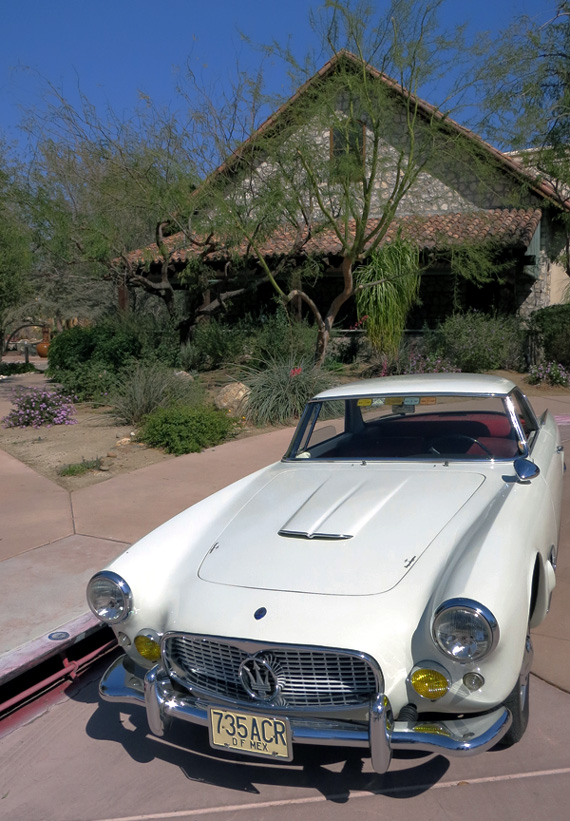
Frank Mandarano’s Maserati’s 3500 GT is a real survivor. With the exception of the paint, it’s completely original. First sold in Mexico, it still has many artifacts from its early period, including its Mexican road tax decals. It is posed in front of Cuistot, the traditional home of the luncheon after Saturday’s tour. Owners Bernard and Susan Dervieux are collectors and Bernard has dabbled in vintage racing.
Story by Michael T. Lynch
Photos by author unless otherwise noted.
The 2013 edition of the Desert Classic Concours d’Elegance was held on the combined properties of the Doral Desert Princess Resort and the Desert Princess Country Club on Sunday, February 24th. Clear skies and wind off the San Jacinto mountains marked the day. It almost didn’t happen because of a dispute between Desert Classic organizer, Paul Merrigan, the City of Rancho Mirage and Palm Springs Life magazine. The matter is now in the hands of attorneys. Merrigan was left with the necessity of changing his venue at the last minute and had less than two months to plan this year’s show. Under the circumstances, the results, entry and scheduling of the traditional events surrounding the concours were remarkable.
Festivities for some began Friday night with a visit to the legendary Bob Hope house, now on the market for a reported cool $45 million. The John Lautner-designed piece of modern art is consider the most distinctive home in the Coachella Valley, an area that has enough significant mid-century architecture to support several ongoing tours for visitors. Hope’s daughter, Lynda, greeted the guests. Both the home and the views of the valley were breathtaking and all agreed it was a memorable experience.
Saturday morning saw a big turnout for the Tour Classique. Beginning at the hotel, the route to Idyllwild took the participants up over 8,000 feet into the mountains. With chilly weather the last few weeks, this was far above the snowline and the vistas were spectacular. The tour ended at Bernard and Susan Dervieux’s restaurant Cuistot in Palm Desert. After watching the cars come in off the road, the group enjoyed some classic French cuisine.
Saturday evening’s event was at the Palm Springs Air Museum where the tables were set up amidst the World War II fighters and bombers on display, including a B-17 under restoration. Era tunes were provided by the Heatwave Jazz and Show Band, made up of members of the Boys and Girls Clubs of the Coachella Valley. The musicians, aged 11 to 20, had the crowd’s toes tapping with their renditions of swing band favorites.
The big event on Sunday had an entry to match the grandeur of the setting. American pre-war classics were heavy on the ground and at the end of the day, Chuck Swimmer’s Chrysler Imperial LeBaron took Best of Show. The silver two-seater with violet accent coachlines was a deserving winner. Another big American, Aaron Weiss’s Marmon V-16 Model 144 Roadster was named the Outstanding Classic. As can be seen from the photo gallery, there were plenty of Italian and French cars to interest VeloceToday readers.
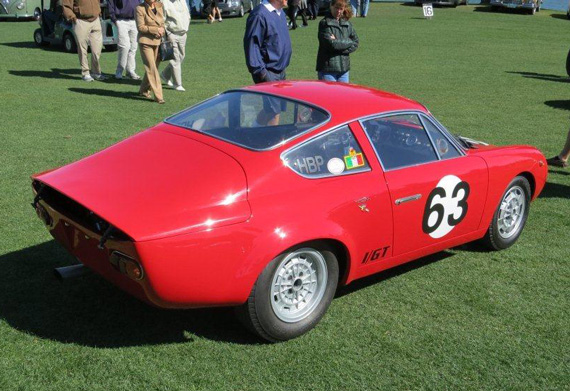
David Walmsley’s Fiat-Abarth 1000 Bialbero GT is bodied by Beccaris. These later models, without Zagato signature styling cues like the double bubble top are among the purest of the Abarth body styles.
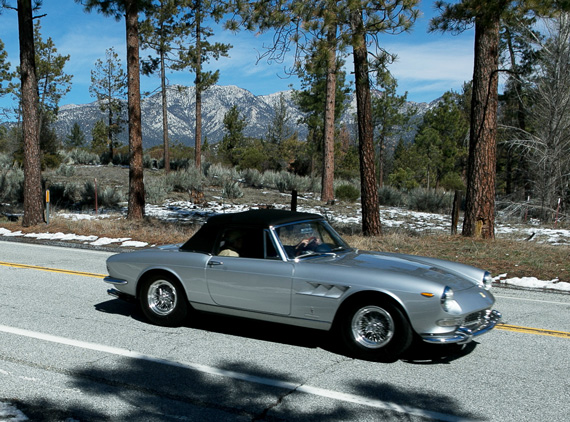
Roger Groves and his passenger get a great view of Mount Santa Rosa on the way to Idyllwild during the Tour Classique. Roger’s car is a Ferrari 275 GTS. 200 of these Spiders were built, almost all for the U.S. market, in 1964-66. Credit Gerry Maceda.
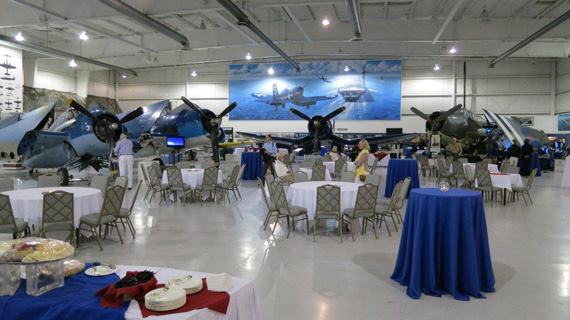
The tables among the warbirds await the guests just before Saturday night's function at the Palm Springs Air Museum.
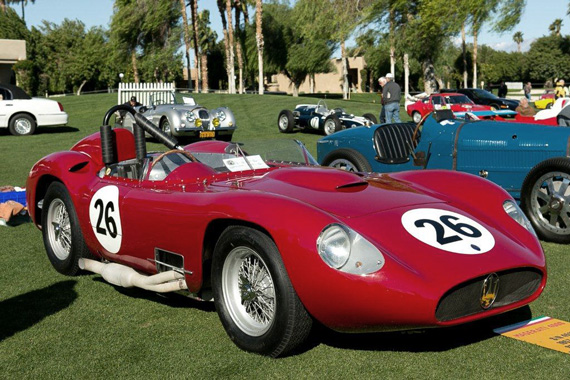
Tom Hollfelder's mighty Maserati 450S sits in the company of a Bugatti Type 35. In the background is Philippe de Lespinay's Cooper T54. This was a one-off design based on Cooper's 1960 World Championship Grand Prix car but with stouter construction, a longer wheelbase and offset suspension. It was built specifically for the Indianapolis 500 where it finished 9th in 1961 with Jack Brabham and began the rear-engine revolution. Jim Clark's rear-engine Lotus 38 won the 500 four years later and 1968 was the last year a front-engine car qualified for Indy. The Cooper was not the first rear-engine car at Indy, but it was the first one that made an impression. Credit: Gerry Maceda
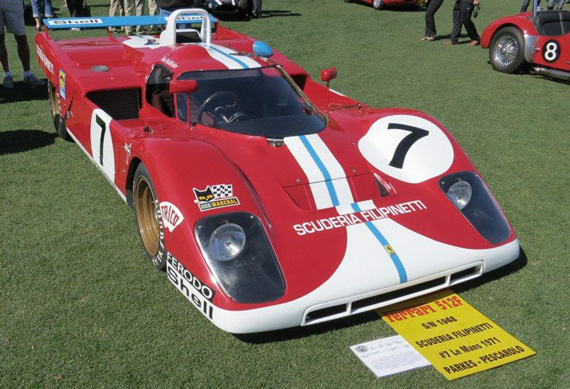
Tom Hollfelder's Ferrari 512M/F was sold to the Swiss Scuderia Filipinetti team for the 1971 season. They brought the car up to 512M specification and added a few tweaks of their own including a Porsche 917 windscreen and a one-piece rear wing.

Yes, it’s American underneath, but Vignale did a nice job on the body. Cunningham C-3s were produced in the 50s because Briggs Cunningham had to produce production cars in order to qualify as a manufacturer for some race organizers. These beauties had Chrysler Hemi engines to back up their looks. Don and Carol Murray’s example won the Best Closed Car award at the Desert Classic.
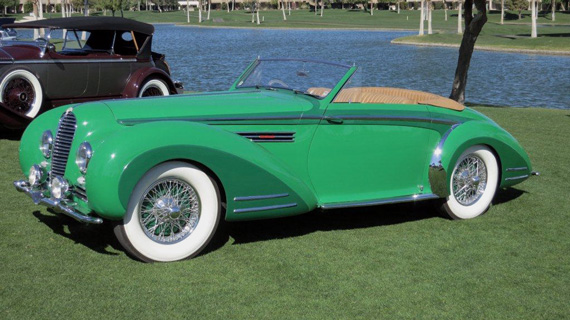
For this viewer, Jim and Tonya Hull's 1947 Delahaye 135 MS 'Vedette' Cabriolet with body by Henri Chapron was the outstanding French coachbuilt car of the day. This was the most sporting of the 135's various chassis that were in production from 1935 to 1954.
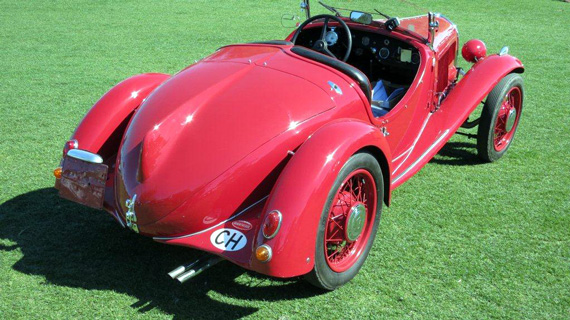
The 995cc Fiat 508 was introduced at the Milan Auto show in April 1932 with three body styles. Later that year, Fiat had Ghia do a sporting body similar to an Alfa Zagato. The result was the model you see here, the Balilla 508 Sport Spider. SIATA offered a four speed transmission, an OHV head and supercharger as aftermarket equipment. A cycle-fendered version known as the Mille Miglia was offered after winning its class in the 1933 Mille Miglia. The car was entered by Symbolic Motors of La Jolla, California.
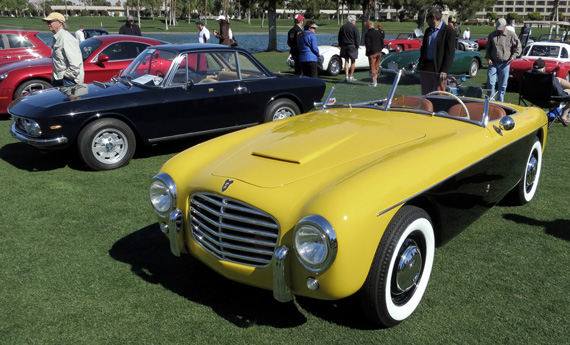
Daniel Cytrynowicz’ Siata Daina won the Under Two Liter European Sports class. These were the largest cars Turin speed equipment manufacturer Siata sold. Based on a beefed-up Fiat 140, the 1400 cc engine had a special Siata head offering a substantial increase in horsepower. Bodywork was usually by Stabilimenti Farina. A modified Fiat four speed or a Siata five speed was available. Several of these cars appeared in American road racing in the 1950s. Next to the Siata is Richard Buckingham’s Lancia Fulvia. Like the earlier Aurelia, this Lancia was also technically advanced, assembled with precision and a wonderful driver, but little appreciated in the U.S. The production run lasted thirteen years beginning in 1963 and featured both 1100 and 1600 cc displacements. Rally prepared Fulvias won the World Rally Championship in 1972.
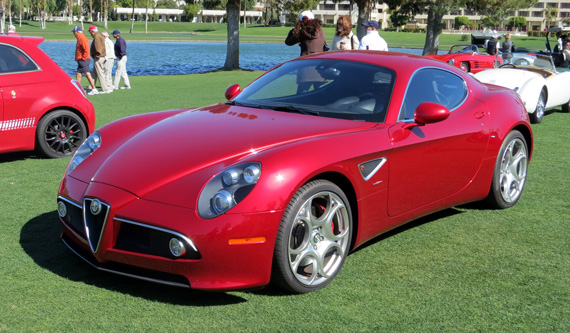
Seldom seen in America, this Alfa 8C Competizione was brought by Doug Magnon. A few of the run of 500 were actually legally imported to the U.S. The shapely body is carbon fiber. The chassis is a modified Maserati 4200 GT and the engine is a 4.7 liter, 450 horsepower V-8 assembled at Ferrari. The whole package was put together at the Maserati factory in Modena. This was Alfa’s official reentry into the U.S. market and let’s hope we soon see the two seat convertible that is a joint venture with Mazda.
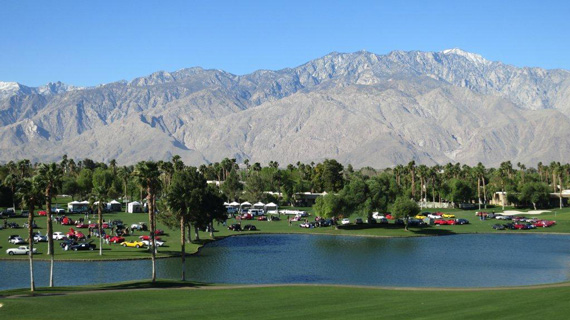
The view of part of the show field from your faithful servant's room in the Doral Desert Princess Resort. Few complaints regarding the setting were heard, especially since the weather man arranged for the highest peaks in the San Jacinto range to be dusted with snow.

The judges look over Harry Hart’s Apollo GT. These cars were built in Italy and received aluminum Buick-Olds-Pontiac V-8s here in the states. They had a rather tortured corporate history. First assembled in Oakland, business failures caused later cars to be built in Dallas and then Pasadena. Convertible, coupe and a 2+2 were built. The latter morphed into the Griffith GT. Ex-Bertone stylist Franco Scaglione had a hand in the early design stage. Apollos will be featured at this year’s Concorso Italiano in Monterey in August.
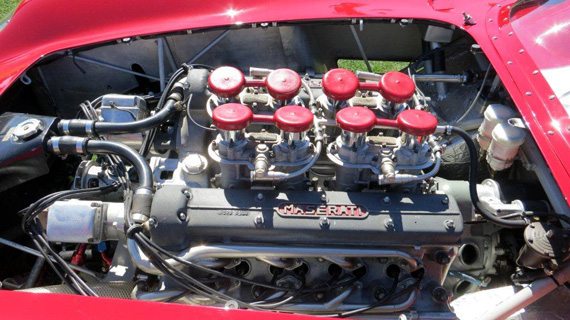

Congratulations on selecting the most beautiful cars for your photographs. It was a wonderful concours though unexpectedly cold & windy.
Hey Pete:
Thanks for including Harry Hart’s Apollo in your coverage of the Dessert Classic. But I must correct one statement: The the Apollo “morphed into the Griffith GT.” The Griffith was initially a TVR into which Griffith installed a Ford 289. Later, The “Griffith-Torino-Italia” series was initiated by Griffith and Intermeccanica boss Frank Reisner. While the Italia followed the same recipe of “american mecahnicals clothed in an Italian body,” there the similarity ends. The Italia used Itailan-sourced suspension components (instead of Buick Special), Ford engine and gearbox, and the body was sketched out initially by Bob Cumberford, but all loft drawings were again done by Franco Scaglione, according to Reisner’s widow, Paula, who lived the saga with Frank. She credits Scaglione with the real design of the car.
An interesting connection between the Apollo and Griffith-Torino-Italia is that International Motor Cars (builder of the Apollo) CEO Ned Davis had talked to Griffith about investing in the project when funds ran dry (Griffith was then building the TVR based car). He passed at the offer, then contacted Frank Reisner to develop a similar car.
Robb Northrup
President, Apollo Owners Registry
Siata Daina.
Frank …You commented Siata Daina…. The Siata 1400 shown, should in my opinion be referred to as a Siata Gran Sport that specifically was applicable to the convertibles. While in some references the Daina series included the Gran Sport, in actual fact the intention was to name the coupes Dainas, & the 1400 convertibles or spyders Gran Sports . In my opinion the best Siata write up ever done was in Automobile Quarterly Volume 23 # 2 On page 150 they showed the Daina coupe, & the Gran Sport spyder
Wow, looking at the Alfa picture, makes me think of all the Alfa experiences we had ‘back a few’. From KC and KU to Sausalito and back. There was usually an Alfa close at hand. The paper bag of fuses is somewhere around here. Jack
Very nice pictures of some very nice cars.
About the Siata it says that they were the largest cars sold by Siata. What about the Fiat Ottovu based 208’s? Were they not sold by Siata?